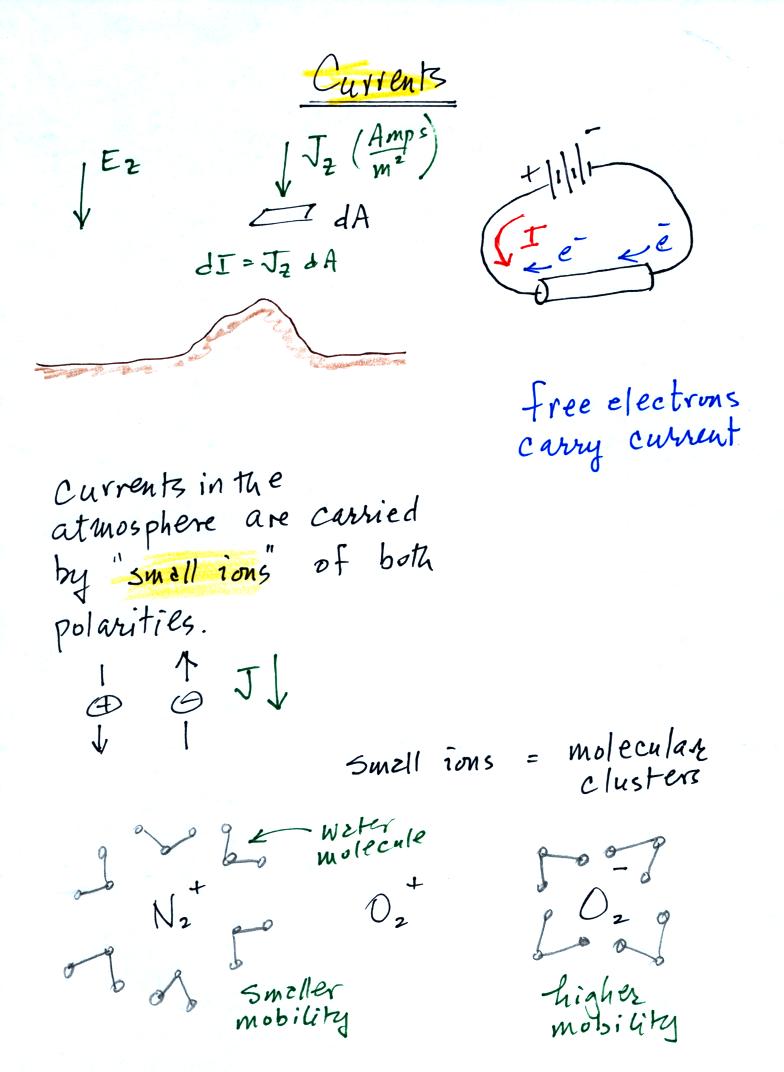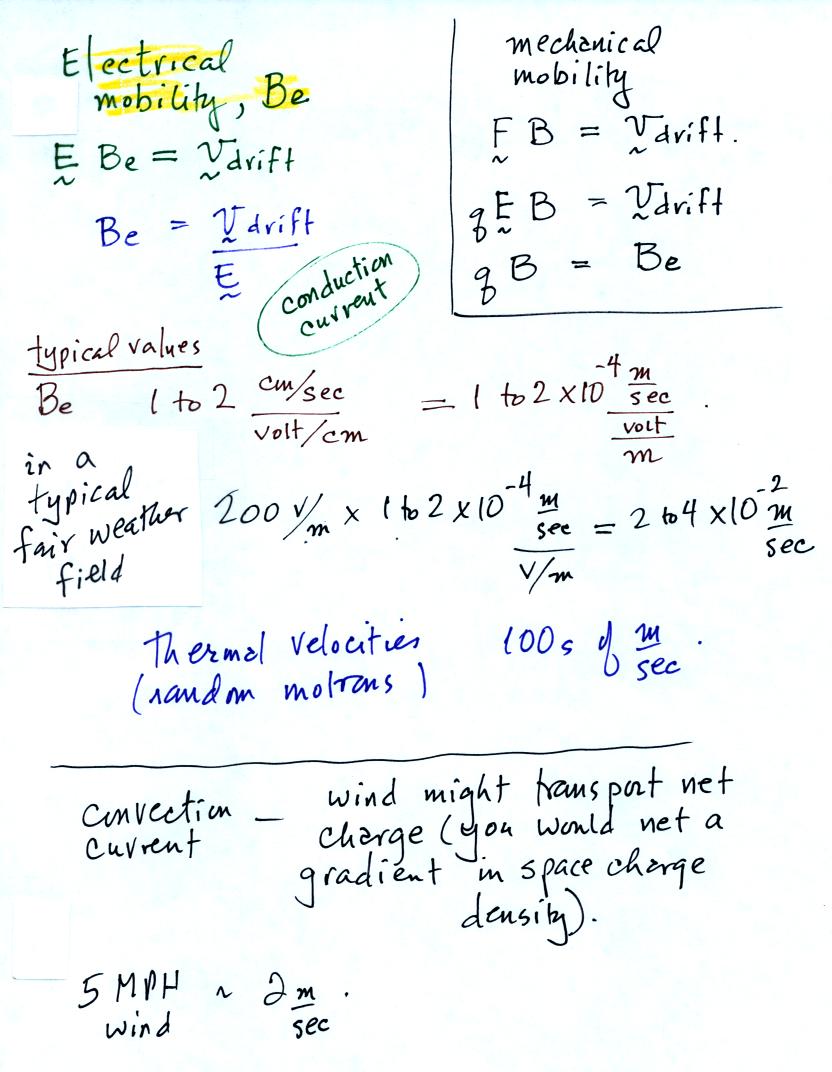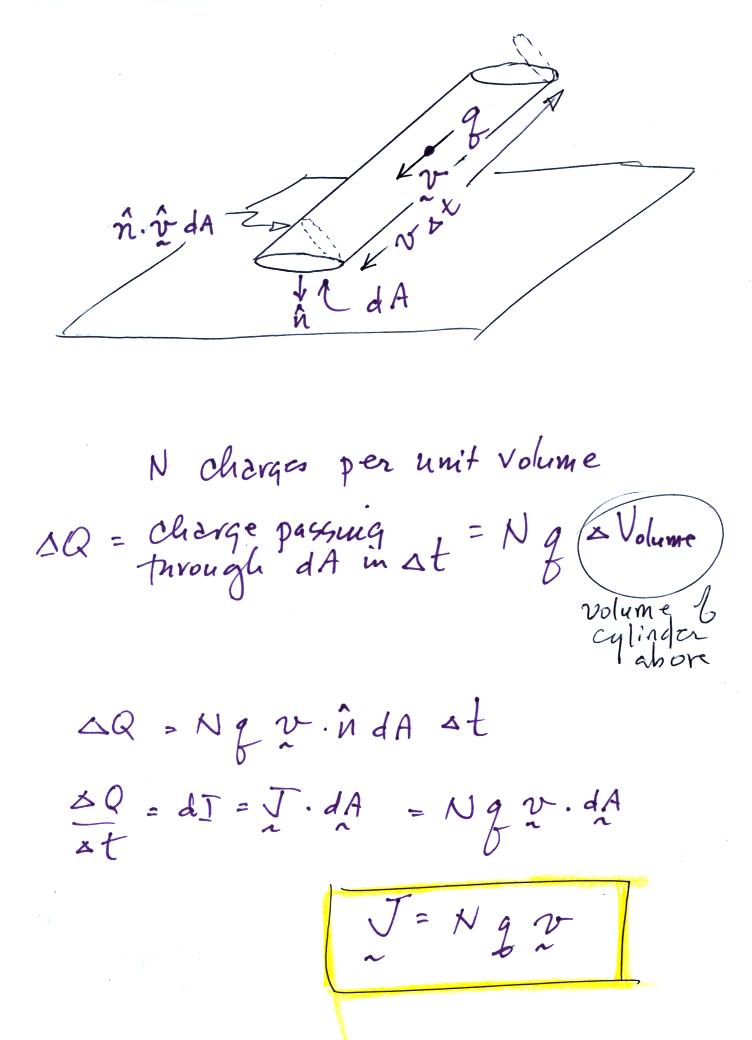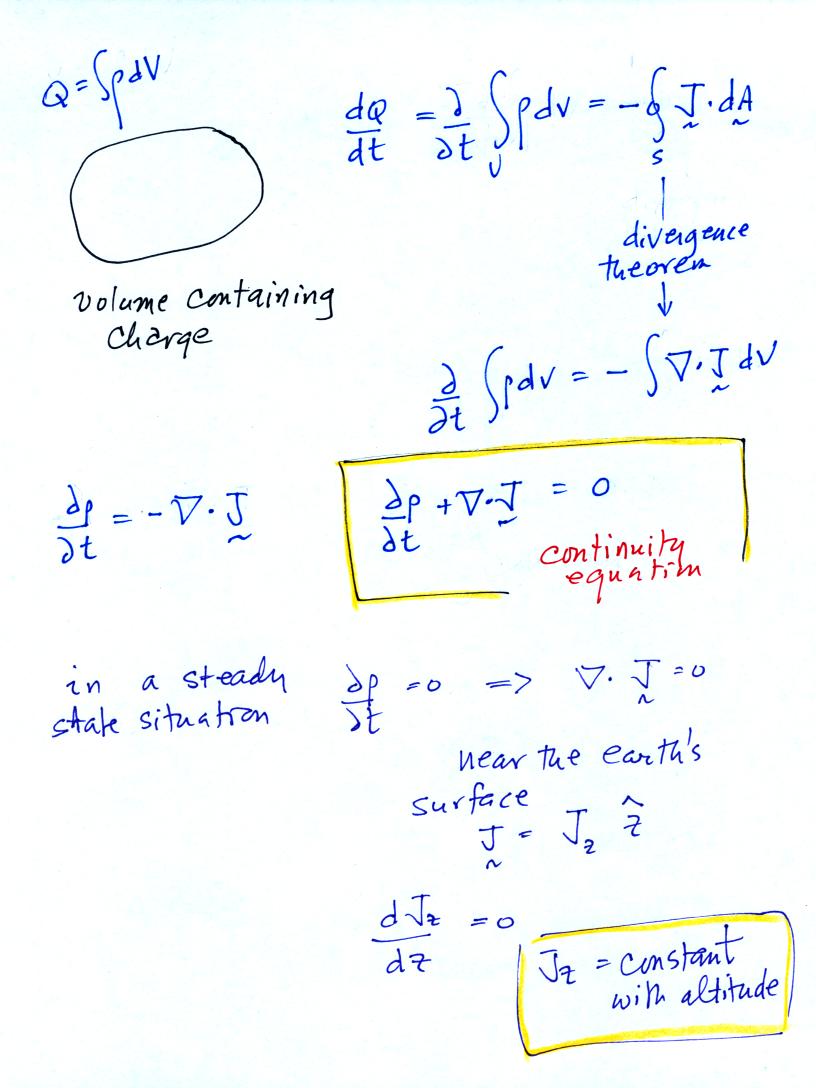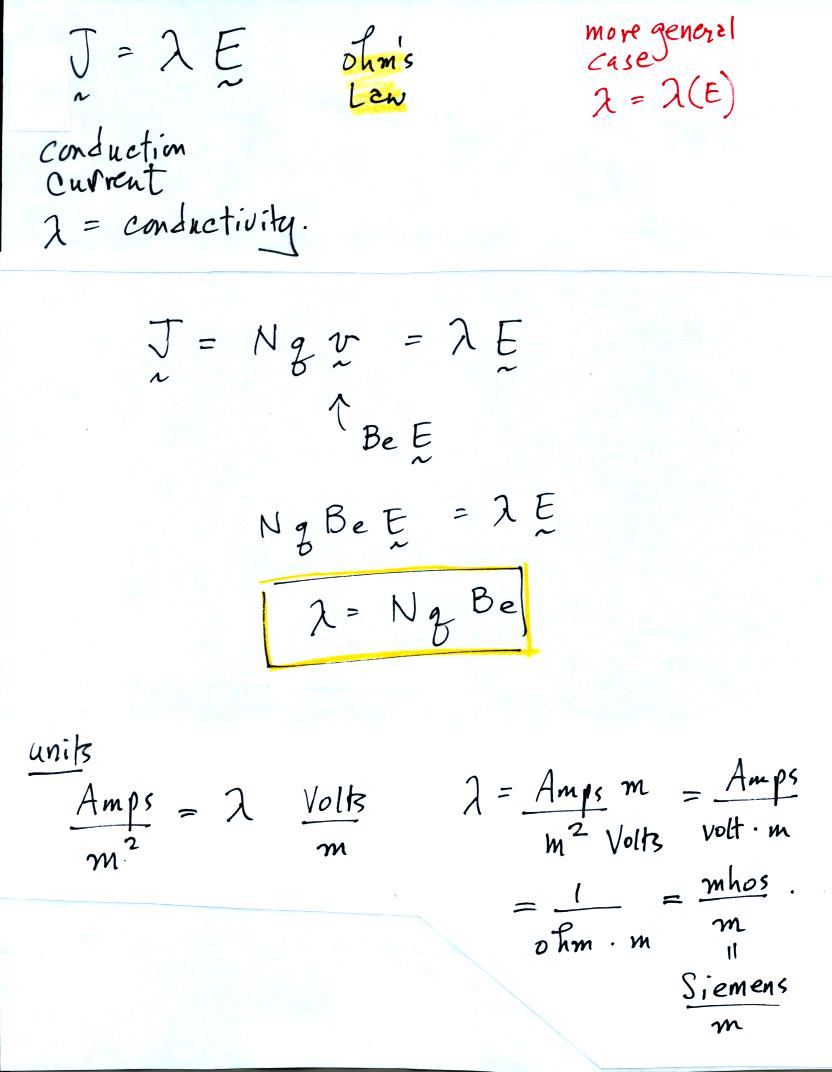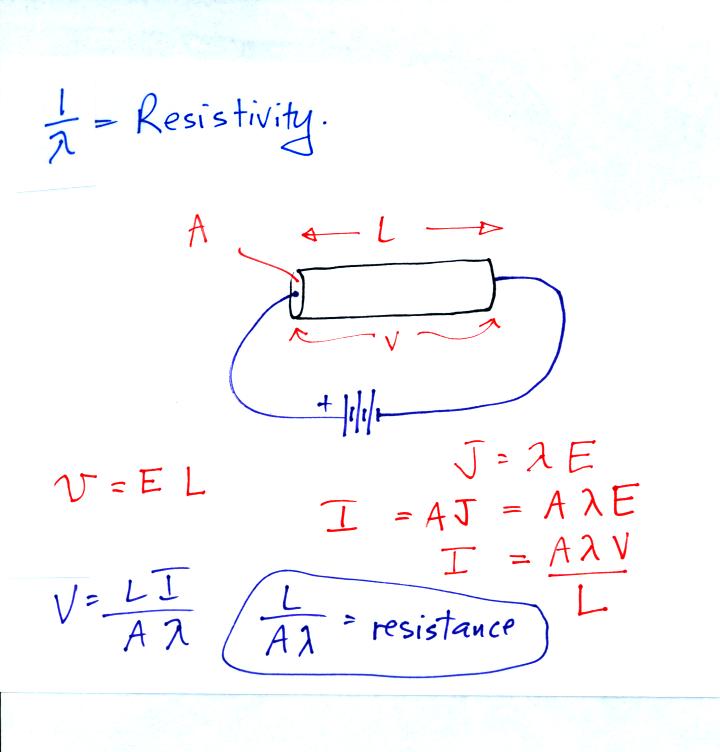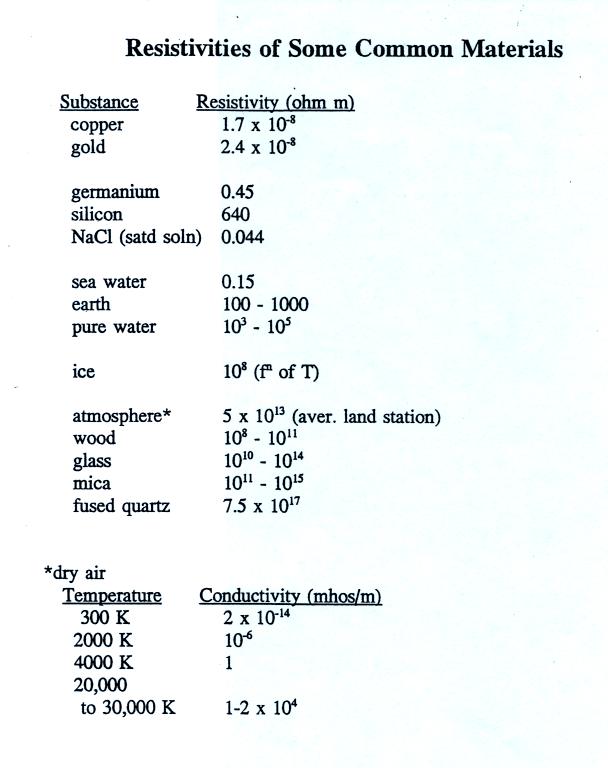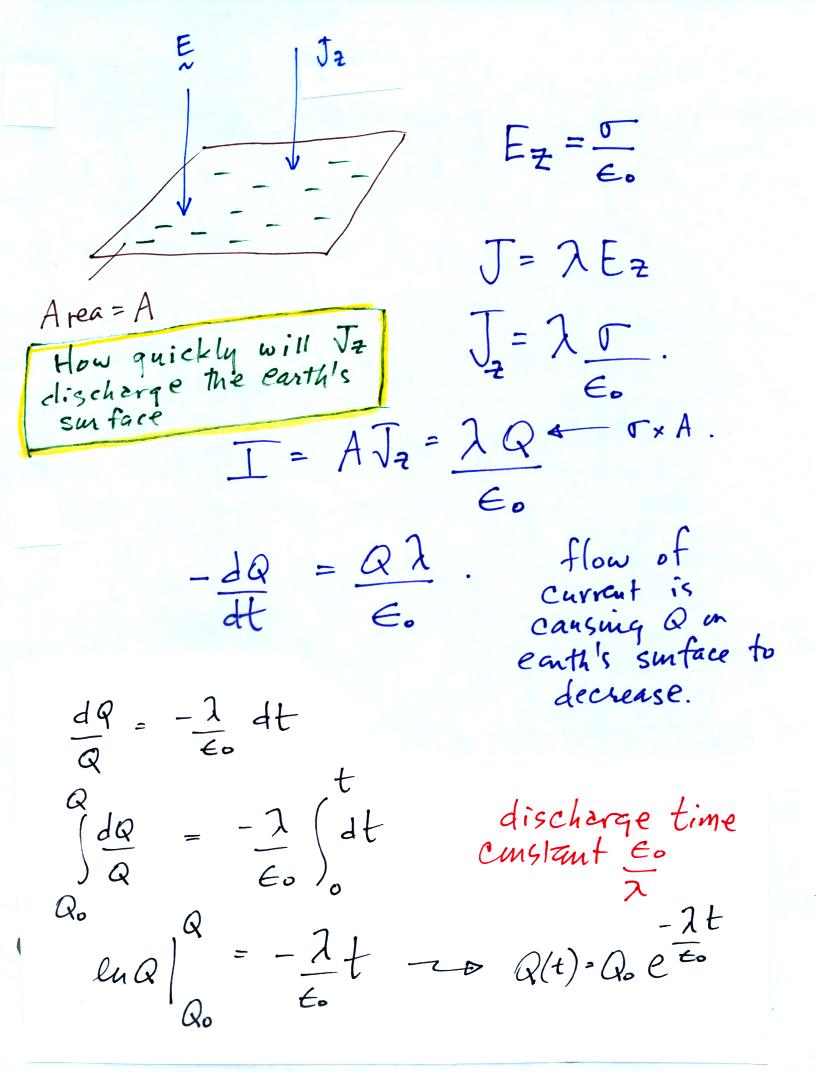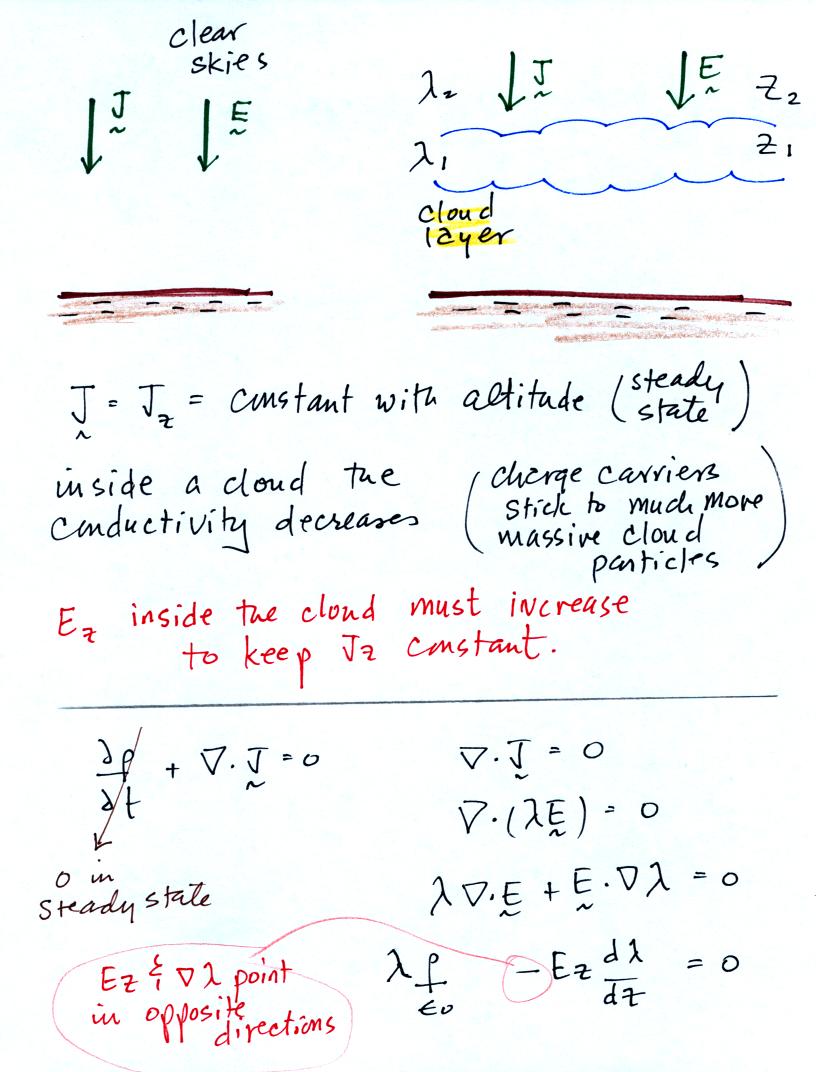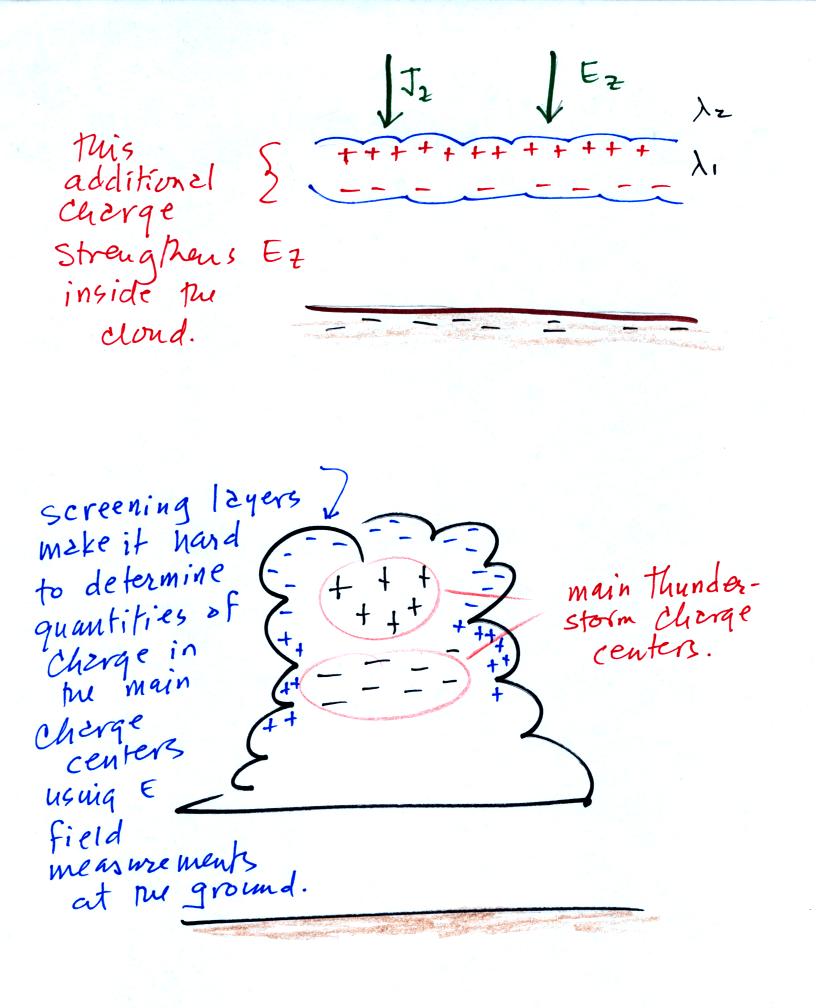Tuesday Feb. 1, 2011
click here to download today's notes in
a more printer friendly format
We leave the electrostatic stuff
behind and today look at currents in
the atmosphere.
In the atmosphere we normally speak of a current density
(Amps/square meter) rather than current. Positive and negatively
charged small ions transport charge in air (just the free electrons
carry charge in a wire). Small ions are charged nitrogen and
oxygen molecules that are surrounded by water molecules. We'll
look at the creation of small ions in more detail in a week or so.
In a conduction current, the charge carriers drift at a velocity
equal to the product of electrical mobility and electric field.
The random thermal velocities are much larger. Convection
currents can also potentially be larger than conduction currents.
Here we consider N charge carriers (each with charge q) moving in
the same direction and derive an expression for J the current
density. In general you would need to sum contributions from
different charge carriers such as carriers with +q moving in one
direction and oppositely charged carriers (-q) moving in the opposite
direction.
We've assumed that the number density of positive and negative
charge carriers is the same.
Next we derive a continuity equation that relates changes in the
space charge density in a volume to net flow of charge into or out of
the volume.
Note that under steady state conditions and where J has just a z
component, the current density Jz is constant with altitude.
Next we use our just derived expression for current density together
with the definition of electrical mobility to derive an expression for
conductivity.
Siemens/meter has replaced mhos/m, you may find mhos/m in some older
literature.
Again if two types of charge carriers are present, the expression for
conductivity would have two terms:
Negatively charged small ions generally have higher electrical
mobility than postively charged small ions.
Resistivity
is
the
reciprocal of conductivity. Resistivity is not the same as
resitance, but it is relatively easy to relate the two.
Resistivities of some common materials are listed below. This was
on a handout distributed in class.
Note how the conductivity of air is a function of air
temperature. A lightning return stroke will heat air to a peak
temperature of about 30,000 K for a short time.
Later in the semester we will look at some fast time resolved
measurements of lightning electric fields that were being used to try
to determine characteristics of the fast time varying currents in
lightning strokes. The measurements were made in a location where
propagation between the lightning source and E field antenna was over
salt water to preserve as much of the high frequency content of the
signals as possible.
Here is a better estimate of how quickly a fair weather current
would neutralize the negative charge on the earth's surface than was
done of the first day of class.
An
important example problem showing what happens along an air-cloud
boundary where there is an abrupt change in conductivity. The
following
two
pages of notes were copied over to a handout that was
distributed in class.
Conductivity inside a cloud is lower than in the air outside a
cloud.
Surface charge builds up along the air-cloud boundary.
Charge along the could edges intensifies the electric field inside
the cloud. The product of higher field times lower conductivity
is able to keep the current density constant with altitude.
Screening layers that form along the edges of a thunderstorm
effectively mask the main charge centers inside the cloud.
